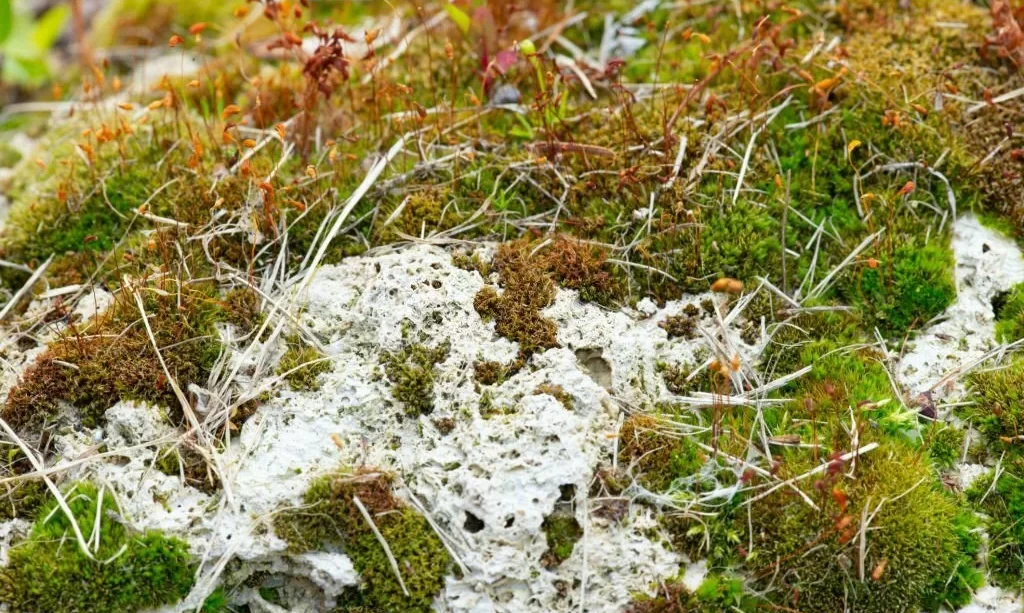The allure of lush, green lawns and vibrant garden landscapes is a dream for many homeowners and garden enthusiasts. Yet, amidst this vision of verdant beauty, there’s a persistent and often unwelcome guest: moss. Moss has a knack for thriving in areas where desirable grasses and plants struggle, leaving gardeners and homeowners seeking effective solutions to control its growth. One common remedy that often comes to mind is lime. But does lime really kill moss, or is it just a gardening myth? In this article, we delve into the world of moss and lime, exploring their dynamics and potential interactions in the quest for a moss-free outdoor space.
Moss Growth
To address the question of whether lime can effectively control moss, it’s essential to understand the nature of moss itself. Moss is a non-vascular plant that thrives in specific conditions, notably those where grass and other plants face challenges. Moss loves moisture, shade, and compacted soil, making it a frequent inhabitant in areas with poor drainage or where sunlight is limited. Its small, lush, and vibrant appearance is appealing in certain garden settings, but when it takes over lawns and competes with desired vegetation, it becomes a concern for gardeners.
Moss’s resilience and adaptability are rooted in its primitive structure. Unlike grasses or flowering plants, moss doesn’t have true roots, stems, or leaves. Instead, it absorbs water and nutrients through its cells, which allows it to flourish even in less than ideal conditions. Understanding moss’s unique characteristics is key to addressing its growth and preventing it from encroaching on your garden or lawn.
The Role of Lime in Gardening
Lime, a versatile gardening amendment, plays a critical role in managing soil conditions and ensuring the health of plants and grasses. It’s commonly used to modify soil pH levels, particularly in areas where the soil is too acidic. Soil acidity, often measured by the pH scale, can impact the availability of essential nutrients for plant growth. Lime helps raise the soil’s pH, making it less acidic, which can lead to improved nutrient availability and overall soil health.
In addition to pH modification, lime also aids in reducing the toxicity of aluminum in acidic soils. High aluminum levels can be detrimental to plant and grass health, making lime an essential tool for mitigating this issue. Gardeners use lime to improve soil structure, promote root development, and foster the growth of desirable plants and grasses.
With its ability to address soil acidity and enhance overall soil quality, lime becomes a central figure in the realm of gardening. However, the question remains: can lime also play a role in controlling moss and preventing its encroachment? This is where our exploration continues, as we examine the effectiveness of lime in moss management and its potential implications for your garden and lawn.
Does Lime Kill Moss?
The prospect of using lime to eliminate moss in lawns and garden areas has been a subject of debate among gardeners and homeowners. It’s essential to clarify that while lime does have valuable roles in gardening, its effectiveness in killing moss is limited.
Lime primarily modifies soil conditions, particularly soil pH, to create a more favorable environment for grasses and plants. By reducing soil acidity and improving nutrient availability, lime indirectly supports the growth of desirable vegetation. However, moss has distinct growth requirements that often differ from those of typical lawn grasses. Moss prefers shaded, damp, and compacted conditions, and simply adjusting soil pH through lime application may not deter its growth significantly.
When it comes to eradicating moss, lime is not a direct moss-killing agent. While it might make the soil less hospitable for moss, it won’t necessarily eliminate existing moss. Moss, with its unique growth structure and resilience, can persist even in less-than-ideal soil conditions. Therefore, while lime can play a role in the overall strategy for moss control, it is typically more effective as a preventive measure than a moss-killing solution.
Using Lime for Moss Control
While lime may not be a moss-killing miracle, it can still be a valuable part of your moss control strategy, particularly as a preventive measure. Here’s how you can use lime to help manage moss in your garden or lawn:
1. Soil pH Adjustment: Lime is most effective when used to adjust soil pH. If you suspect that acidic soil is contributing to moss growth, conduct a soil test to determine the pH level. If the pH is too low (indicating high acidity), apply lime to raise the pH and make the soil more suitable for grass and other desirable plants. This adjustment can help create a less favorable environment for moss to thrive.
2. Regular Maintenance: Incorporate lime into your regular lawn care routine. Applying lime as part of your seasonal maintenance can help maintain an optimal pH level and overall soil health. Healthy grass and plants can better compete with moss and reduce its establishment.
3. Other Moss Control Methods: Lime is most effective when used in combination with other moss control methods. For existing moss, physical removal, such as raking or hand-picking, is often necessary. Improve soil drainage and reduce shade to create conditions less favorable for moss growth. Additionally, consider using moss-killing products if moss is particularly persistent.
It’s important to remember that the success of your moss control efforts depends on a holistic approach that includes addressing the root causes of moss growth. Lime can be a supportive component of this strategy, but it should be integrated with other methods to effectively manage and prevent moss in your outdoor spaces.
Alternatives and Additional Moss Control Methods
While lime can be a part of your moss control strategy, it’s essential to consider alternative methods and additional approaches to effectively manage moss in your garden or lawn. Here are some alternative moss control methods:
1. Physical Removal: Physical removal of moss by raking, hand-picking, or using specialized moss removal tools can be a highly effective method. This approach directly eliminates existing moss and allows your grass to reclaim the space.
2. Adjust Environmental Conditions: Moss thrives in shaded and damp areas. By addressing these environmental conditions, you can make your lawn less favorable for moss growth. Prune overhanging branches, create better soil drainage, and ensure proper lawn aeration to encourage healthier grass and discourage moss.
3. Moss-Killing Products: Moss control products, such as iron-based moss killers, are specifically designed to target and eliminate moss. They can be effective for stubborn moss problems but should be used according to the product instructions.
4. Promote Healthy Grass: A dense, healthy lawn can resist moss invasion. Regular fertilization, proper watering, and appropriate lawn care practices can encourage the growth of desirable grasses and reduce moss competition.
5. Improve Soil Conditions: Beyond soil pH, ensuring good soil structure and quality is essential. Soil aeration, overseeding with desirable grass varieties, and addressing compaction issues can help improve your lawn’s health and reduce moss problems.
Conclusion
In the quest to manage moss in your garden or lawn, it’s important to recognize that moss control is not a one-size-fits-all solution. While lime can play a role in adjusting soil pH and creating a more favorable environment for grasses and plants, it may not be a direct moss-killing agent. Understanding the unique requirements of moss and addressing the root causes of its growth is key to effective moss control.
In conclusion, the combination of methods, including soil pH adjustment, physical removal, and environmental adjustments, creates a holistic approach to moss management. By addressing moss from multiple angles, you can achieve a moss-free outdoor space that thrives with lush, healthy grass and plants. While lime may not be a moss-killing miracle, it is a valuable tool in the toolkit of moss control, working alongside other strategies to maintain a beautiful and moss-free garden or lawn.




